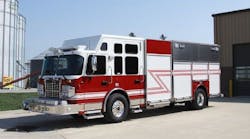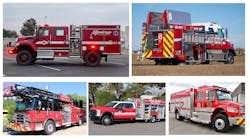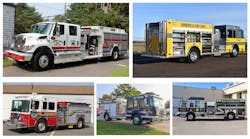BALTIMORE – Compressed air foam systems (CAFS) are only as good as the training people receive on how to use it. There are people who swear by it and other who swear at it.
Just ask Dominic Colletti, chief training officer, Rural Firefighting Academy. He was one of the instructors at Firehouse Expo in Baltimore. He lead a class called; “Winning Strategies for the Successful Use of CAFS.”
“I have people telling me; ‘Dominic, I have used it and I have had horrible results,’” Colletti said. “And then I have people say it’s the best thing since sliced cheese. …It’s my belief that the people who have poor results are the ones who have inadequate training. There are lots of pros and cons, but it’s my belief that the people who have negative experiences don’t use it properly. If you haven’t been trained, you are going to fail.”
Colletti said the key to successful CAFS operation is water. Water is what fights fire and it is the cooling agent, he said.
“We have been using water forever,” Colletti said. “CAFS just makes it more effective. Water is what makes the fire go out. It’s what absorbs the heat, CAFS just makes it more efficient.”
Water savings comes from reduced knocked down and extinguishment times, Colletti said, not from up front savings.
Colletti, who is considered a world expert in CAFS, said he got a call from a fire chief from a metropolitan career department from the Midwest. The chief was reporting that his firefighters were getting thermal burns through turnout gear during training fires using CAFS.
Intrigued, Colletti asked for the ratio on the CAFS and was told 50 percent water to 50 percent compressed air foam. Immediately, Colletti said he knew the problem – insufficient water to put out the fire.
“They had effectively cut their water flow rate in half by using a 50/50 ratio,” Colletti said, solving the problem of thermal burns for the city.
From lots of experimentation and experience in more than 25 years, Colletti said he finds a ratio of 120 gpm of water to 60 cfm of air to .5 percent foam is the best for fighting fire.
He also recommends using just the pistol grip and ball valve of for a nozzle that is at least 1 3/8-inch in diameter. Anything less than that will just strip off the bubbles made by the air. Too often, firefighters use nozzles that are too small to get all the “stuff” in CAFS out. He said what is in the hose is finished foam that does not need any shaping with a nozzle. The only thing needed at the end of the hose is a way to turn it on and off for application and the quarter turn ball valve of just the pistol grip nozzle is sufficient to do the job.
He said CAFS does not rewrite the laws of physics. The nationally recognized water flow rates are the only thing that will put out fires.
“There are only certain things in life, death and taxes, and third is flow rates,” Colletti quipped. “Without water, you are not going to put out fire.”
Colletti understands the fire service is filled with people with opinions and politics, but there is science that backs up CAFS as an effective firefighting tool.
“I know back 25 years ago when I first picked up a CAFS line, I didn’t know if it would work,” Colletti said, adding that now he knows it will work and is teaching others its benefits.
Once a department makes the commitment to buy CAFS equipment, which can mean spending up to $70,000 on an apparatus, the next step is to make sure everyone is trained sufficient on it to make sure it works.
“You can’t just buy CAFS and say; ‘there, I’m good to go,’” he said. “You have to train and learn how to repeatedly make good compressed air foam.” Standard operating guidelines will help achieve that goal as well.
“That way you know it will work rather than guessing it will work,” Colletti said.





